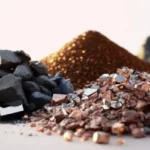
India accelerates domestic production and establishes strategic reserves to reduce reliance on China and secure critical minerals for emerging technologies.
India is intensifying efforts to bolster its position in the global rare earth elements (REEs) market, aiming to reduce dependency on China and ensure a steady supply for critical industries such as electronics, defense, and renewable energy. Recent developments underscore the nation’s commitment to securing its mineral resources.
The government has announced the establishment of a National Critical Mineral Stockpile, targeting a two-month reserve of key REEs. This initiative encourages private sector participation and aims to mitigate global supply chain vulnerabilities. The move aligns with India’s broader strategy to enhance domestic production and processing capabilities for REEs.
In parallel, the Ministry of Electronics and Information Technology (MeitY) is promoting “urban mining” initiatives, focusing on the recycling of rare-earth magnets from electronic waste. This approach not only conserves resources but also contributes to environmental sustainability. The Production Linked Incentive (PLI) scheme has been extended to include rare-earth magnet recycling, signaling a significant policy shift towards self-reliance in critical minerals.
These efforts are timely, as global markets face uncertainties due to China’s recent export restrictions on REEs. China’s export of rare-earth magnets fell by 6% in September, reaching a seven-month low, raising concerns about supply chain stability. India’s proactive measures position it as a resilient alternative in the global REE supply chain.
Key Takeaway: India’s strategic initiatives in rare earths and critical minerals aim to enhance domestic capabilities, reduce reliance on external sources, and contribute to global supply chain stability.
